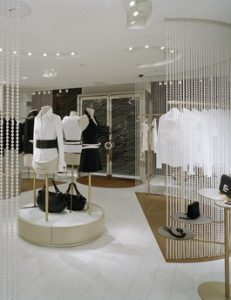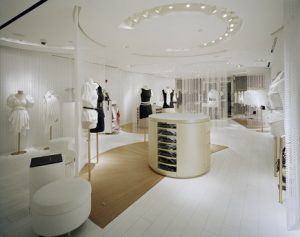The white shirt is arguably the most classic element of a woman’s wardrobe, a simple staple celebrated by everyone from Gap to Giorgio Armani. But none has embraced it with as much ardor as Anne Fontaine.
The half-French, half-Brazilian design darling first made her fashion mark in 1993 with a fresh take on the traditional white blouse that has since become her signature. Twice a year, Fontaine introduces some 100 double-collared, rouched and/or embroidered designs to her 68 shops worldwide, including flagships in Paris, New York and Tokyo.
The latest is on New York’s Madison Avenue, between 61st and 62nd, a 7500-square-foot, tri-level store with lush materials and moody lighting in a historic building. It’s a bit of a departure from her first shop on Paris’ Rue des Saints-Péres, where the design reflected the simplicity of her first white blouse.
“We’re growing as a brand and offering so much more to our customers,” says Teresa Bravo, the brand’s retail director. “Back then, we really were just white shirts.” More recently, the designer has introduced jackets, knits, accessories, handbags and fragrances. “There’s more to discover with the brand, so there needed to be more to discover with the stores,” Bravo says. “Our new shops are designed to be visually stimulating and interesting for the customer, just like our offerings.”
Hide and Seek
Setting up shop in an old building that previously housed a liquor store for 60 years meant major renovations. Not a problem, according to Bravo. “We don’t do cookie-cutter flagships,” she says. “Being on Madison Avenue in a historic space was part of the allure. We rejuvenated the building, but brought it to the future with a modern, urban twist.”
Advertisement
Shawmut Design and Construction (New York) was in charge of breathing life into the 100-plus-year-old building, including installing a new façade on the first and second floor that required approval from the NYC Landmarks Preservation Commission and shutting down part of the busy street for a period of time.
“The existing site was a mess,” says Vincent Spataro, senior project manager at Shawmut. “Walls were falling apart, floors were crooked and unstable, pipes and wires were everywhere.”
After Shawmut stripped away the remnants from the previous occupant and rebuilt the infrastructure in the cellar, renowned design veteran Andrée Putman and TPG Architecture LLP (New York) came in to create an environment rooted in the brand’s heritage with a classic, minimalist setting and airy white hues. The design flirts with dramatic details, such as extravagant fitting rooms, silk drapery and curving customer paths that encourage discovery – a nod to the brand’s evolution.
On the sales floor, an all-white backdrop brings the focus to the detailing in Fontaine’s clothes. Color is limited, appearing in brief pops: a bright yellow belt encircling a black-and-white striped cardigan, or bursts of amethyst, a shade Bravo says is the color of mystery. “The shopper isn’t distracted by color,” she says. “It all goes back to the white shirt: White allows a customer to see its ruffles, pleats or buttons. A white store does the same thing.”
Swaths of fabric, circular fixtures, bowed lighting coves, backlit niches and elegant curtains of pearl beads further encourage closer inspection. “We want the customer to enjoy her time in the store,” Bravo says. “These areas make her want to go around the corner, see what’s behind the pearls or enter the accessory cove and discover.”
Fade to Black
Advertisement
Fontaine has upped the ante even further with her product line in the new flagship through the way her latest collection is displayed. The Precious Collection features hand-assembled shirts and best-sellers from the prêt-à-porter line in fabrics such as duchess silk, and is housed in a space Putman created as a “mystery boudoir.” The narrow, darkened room (known as the Precious Room) is the wild side of the soft white, modern main floor. It’s a seductive space with black stone floors, a black ceiling, black walls and streaks of light shining on rows of forms donning the designs. This is the first of Fontaine’s flagships to experiment with the alluring room. “
The Precious Room is not like any other place in the store,” says Bravo. “In here, the shopper feels transformed. It’s dramatic because the pieces are dramatic.”
Client: Anne Fontaine, New York Anne Fontaine, owner; Ari Zlotkin, owner Jacques Jacob, development manager Design Agence Andrée Putman, Paris Architect TPG Architecture, New York General Contractor Shawmut Design and Construction, New York Audio/Visual Hi-Tech Sounds, Boston Ceilings Shawmut Design and Construction, New York Fixtures, Flooring, Furniture and Mannequins/Forms James Ebenistes, St. Laurent De Cuves, France Signage/Graphics Big Apple Visual Group, New York Photography Satoru Umetsu, Nasasa Partners, Inc., Tokyo

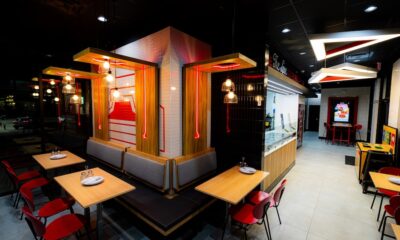
 Headlines1 week ago
Headlines1 week ago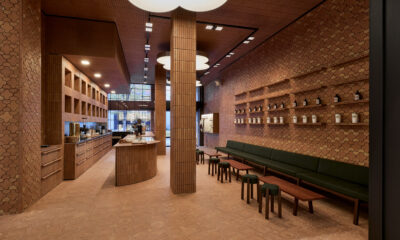
 John Ryan2 weeks ago
John Ryan2 weeks ago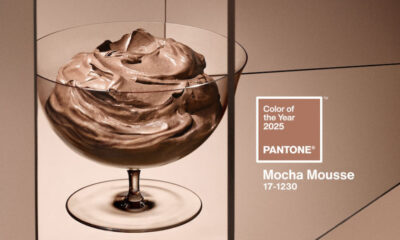
 Headlines1 week ago
Headlines1 week ago
 Headlines2 weeks ago
Headlines2 weeks ago
 Headlines1 week ago
Headlines1 week ago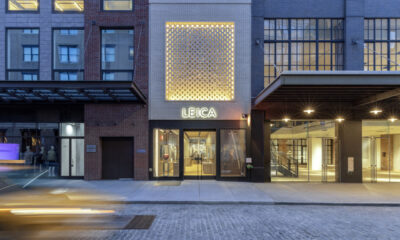
 Retail Buzz3 days ago
Retail Buzz3 days ago
 Headlines1 week ago
Headlines1 week ago
 Headlines1 week ago
Headlines1 week ago
